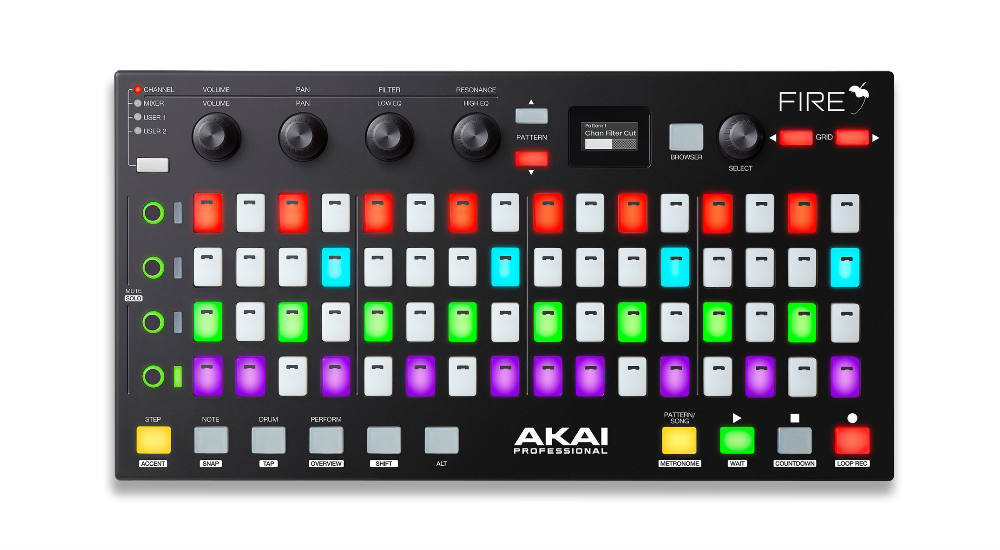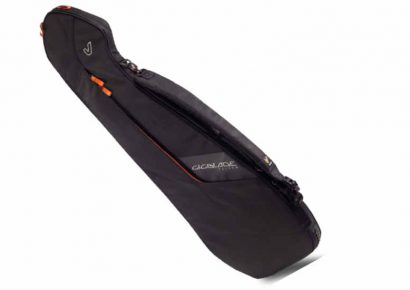There are a lot of generic MIDI controllers available on the market, but as we have seen over recent years, a controller specifically designed for a certain software platform can really open up the possibilities. It doesn’t need to be big or expensive, it just needs to be focused on delivering the tools required to get the most from the software, and that is exactly what the Fire does. It’s about half the size of many of the popular pad grid controllers for other software platforms, yet it packs in twice as many pads as most. Being that Akai have had a hand in building controllers for other platforms before, you’re pretty safe in assuming they have this one all stitched up. The housing has a nice low profile, and sits firmly on the desktop without any unwanted movement when being punished. The plastic housing keeps the weight down, but it is still pretty tough, and all the buttons and pads have a great feel to them. There’s a nice snap to the engagement of the buttons and a firm response from the slightly softer velocity sensitive pads. It certainly feels like this is going to go the distance and take whatever you dish out in your music making and performance.
At first glance I was excited to see that although the more common grid pattern of modern workflow has been adhered to, there was a familiar air to the top panel with the old step sequencer vibe being adopted too. The four rows of 16 pads have subtle lines between each four pads on the casing, so you’re back to working with that old faithful input method of drum machines and sequencers of the past. This allows for four separate instruments to be sequenced and shown visually on the pads at once, or for a single sequence to be expanded across all four rows. Of course, if that isn’t enough, and you feel like jumping way ahead of the game, four Akai Fire units can be linked to create a monstrous eight rows with 16 pads each. But, let’s just focus on a single unit for now.
You can get a great feel for your drums and synth programming with the step sequencer display, but if you prefer a more tactile, fluid method of recording your notes, there are a number of ways in which this can be achieved. You can play directly onto the piano roll on screen with the touch sensitive pads in real time before going back and cleaning up the edits for any notes that are a little off kilter. Or for drum programming, you can take a central bank of 16 pads and operate it like the classic MPC-style controller for those who prefer this method of note input.
Of course, the Fire isn’t just a big bank of input pads designed to replace a keyboard. It has plenty of other features to improve your workflow. In fact, most buttons have a multi-use feature with the depression of the ALT button to double up on the processes you can achieve. A cheat sheet of shortcuts is included in the box, so you should have no problem working your way around the combinations in no time. Basic transport controls can be found in the lower right of the panel and all the tools needed for step sequencing are found in the lower left. Mute and solo functions share the same buttons on the far left, and the top left of the panel has four rotary encoders for a range of features including volume, pan, filter, resonance and EQ. Completing the clockwise lap of the unit you’ll find a small data screen and push-button rotary encoder for entering information where needed, right next to the grid shifting buttons.
It’s been well thought out so that everything you need is right at your fingertips for a seamless workflow. You even get a copy of FL Studio Fruity Fire Edition included with the unit. If you aren’t yet an FL Studio user and are looking for a new workflow in music production, the Fire gets you making music in no time with both software and hardware that are designed to work seamlessly with one another. For existing FL Studio users and for those looking for a foot in the door, this is an awesome package that really makes it easy to get the most from the software. There’s a lot less time spent on the mouse and even less time dabbling on the old QWERTY keyboard, as you’ll be focused on the Fire itself. This is going to change the way a lot of people look at FL Studio.
Want to win your very own Akai Fire? We’re giving one away absolutely free.

